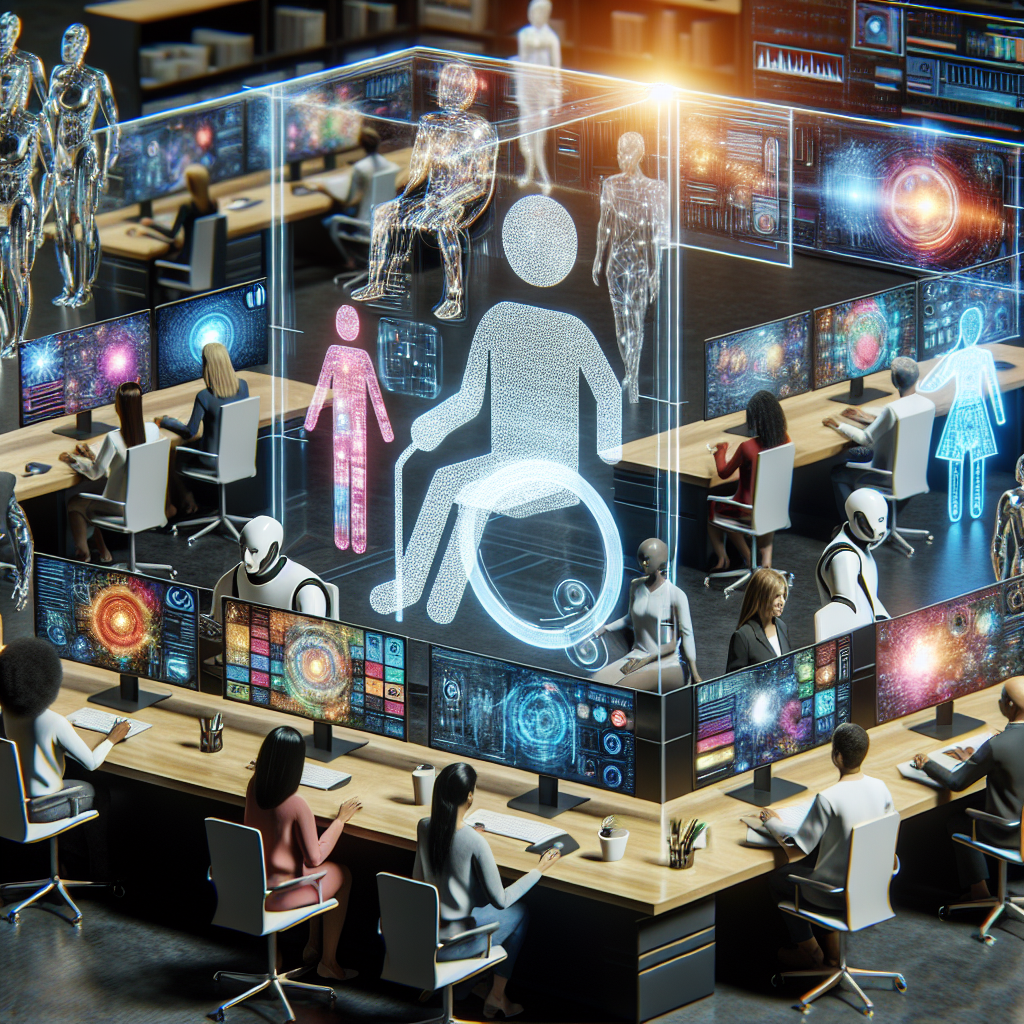In today’s digital age, accessibility and inclusivity have become increasingly important considerations for businesses and organizations. With the rise of technology, there are now more opportunities than ever to leverage AI-driven solutions to enhance accessibility and inclusivity for all users. From improving the user experience for individuals with disabilities to creating more inclusive products and services, AI has the potential to transform the way we interact with technology and each other.
Accessibility and inclusivity are critical components of any digital strategy. By ensuring that all users, regardless of their abilities or limitations, can access and use your products and services, you not only increase your potential customer base but also demonstrate a commitment to equality and social responsibility. AI-driven solutions offer a unique opportunity to address these challenges by providing innovative tools and technologies that can adapt to the needs of individual users and improve the overall user experience.
One of the key ways in which AI can enhance accessibility and inclusivity is through the use of natural language processing (NLP) and speech recognition technologies. These technologies allow users to interact with devices and applications using their voice, making it easier for individuals with mobility impairments or visual impairments to navigate digital platforms. By enabling voice commands and speech-to-text capabilities, AI can help users with disabilities access information and communicate more effectively, ultimately improving their overall user experience.
Another way in which AI can enhance accessibility and inclusivity is through the use of image recognition and object detection technologies. These technologies can be used to identify and describe visual content for users with visual impairments, allowing them to better understand and interact with digital images and videos. By providing audio descriptions or alternative text for visual content, AI-driven solutions can make digital platforms more accessible to individuals with disabilities and ensure that they are not excluded from important information or experiences.
In addition to improving accessibility for individuals with disabilities, AI-driven solutions can also enhance inclusivity for all users by personalizing the user experience based on individual preferences and needs. By analyzing user data and behavior, AI algorithms can tailor content, recommendations, and interactions to better meet the unique needs of each user, creating a more personalized and engaging experience for everyone.
Furthermore, AI can help businesses and organizations proactively address accessibility and inclusivity concerns by identifying potential barriers and suggesting improvements to digital platforms. By analyzing user feedback, performance data, and accessibility standards, AI algorithms can identify areas for improvement and provide recommendations for enhancing accessibility and inclusivity. This proactive approach can help businesses stay ahead of the curve and ensure that their products and services are accessible to all users.
Overall, AI-driven solutions have the potential to revolutionize the way we think about accessibility and inclusivity in the digital age. By leveraging the power of AI technologies, businesses and organizations can create more inclusive and accessible products and services that cater to the diverse needs of all users. From voice recognition and image recognition to personalized experiences and proactive improvements, AI has the potential to transform the digital landscape and make technology more accessible and inclusive for everyone.
FAQs:
Q: How can AI-driven solutions enhance accessibility for individuals with disabilities?
A: AI-driven solutions can enhance accessibility for individuals with disabilities by providing tools and technologies such as natural language processing, speech recognition, image recognition, and personalized experiences that cater to their unique needs and limitations.
Q: What are some examples of AI-driven technologies that improve accessibility and inclusivity?
A: Some examples of AI-driven technologies that improve accessibility and inclusivity include voice recognition, speech-to-text capabilities, image recognition, object detection, and personalized content recommendations.
Q: How can businesses and organizations leverage AI to enhance accessibility and inclusivity?
A: Businesses and organizations can leverage AI to enhance accessibility and inclusivity by implementing AI-driven solutions that cater to the diverse needs of all users, proactively addressing accessibility concerns, and personalizing the user experience based on individual preferences and needs.
Q: What are the benefits of using AI-driven solutions to enhance accessibility and inclusivity?
A: The benefits of using AI-driven solutions to enhance accessibility and inclusivity include reaching a larger audience, demonstrating a commitment to equality and social responsibility, improving the overall user experience, and staying ahead of the curve in the digital landscape.

